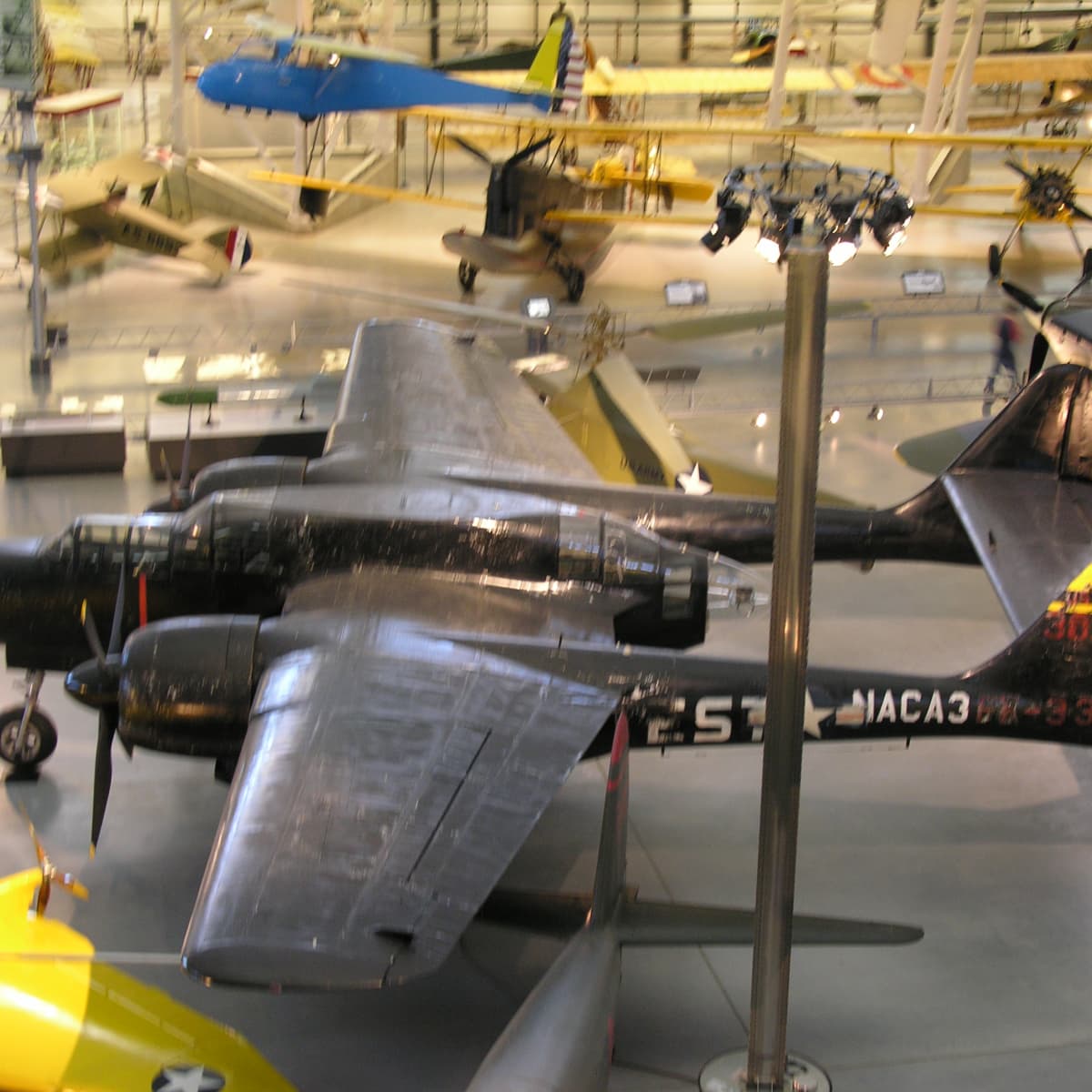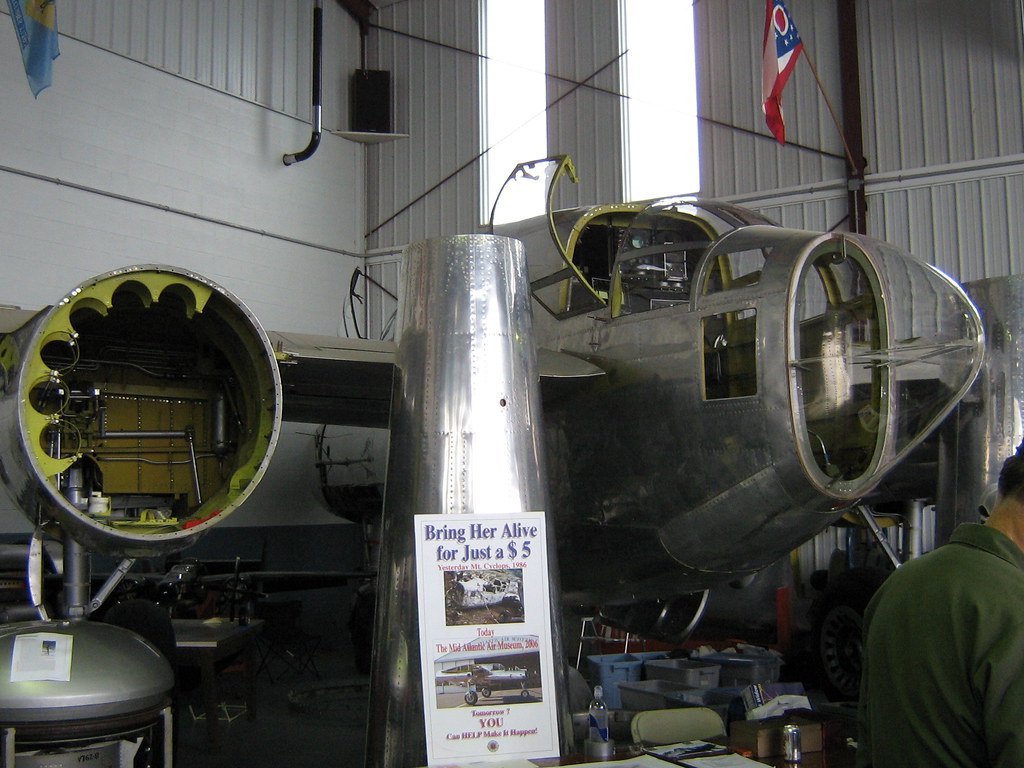P61 Night Fighter - Artist Jack Fellows Nakajima Ki.84 Pilot Sergeant Akira Kusano becomes the seventh and final victim of P-61 ace Major Carroll Smith over Mindoro early December 30, 1944. (Jack Fellows, ASAA)
Not counting bombers, transports, and more specialized types, the United States produced over 100,000 fighter aircraft of 11 different types for use in World War II. Only 674 of these were Northrop P-61 Black Widows (another 32 were delivered after the war ended). Yet the brutal twin-engine night fighter achieved mythic status at the end of its short production run and short career: just one year of combat.
P61 Night Fighter

Does the infamous Black Widow deserve such fame? Good question, and the answers are all over the place depending on whether you think Black Widow is "too cool" or enroll in "too slow, too little" school.
Northrop P 61 Black Widow Night Fighter
The British invented night aerial combat during the First World War when specially modified Royal Aircraft Factory B.E.2cs were first used to defeat the German Zeppelin night bombing campaign. The slender biplanes were equipped with fixed Lewis machine guns that fired upwards at a 45-degree angle, so the aircraft only had to fly under the huge notoriously incendiary airships and catch fire. The Luftwaffe adopted that idea later in the war for the highly effective Junkers Ju-88G and several other night fighters, called
(Jazz music). The various Ju-88 brands have more night victories in European theaters than all Allied night fighters combined.
But initially the US had no use for night fighters. The Army Air Corps was confident that the Americans were safe from night and day attack between two impossibly vast oceans, and the offensive doctrine was built around daytime bombing. Unlike the RAF, the US No longer had to frantically search the night skies for intruders over its capital or, later, escort its own bombers in the dark.
The Battle of France and Britain and the London Blitz of 1940 proved that this new war would be different, and RAF airmen shared the lessons learned from Fairy Battles, Bolton-Paul Defiants, Spitfires and Hurricanes with their American counterparts. . With London still ablaze and Heinkels humming in the night, the British approached Jack Northrop, with whom they were already doing business (Northrop was building Vultee Vengeance dive bomber licenses for the RAF), to design and build a new night fighter called Radar.
Northrop P 61 Black Widow · The Encyclopedia Of Aircraft David C. Eyre
Within a month, the British had the U.S. War Department apprised of their latest developments—the cavity magnetron and centimeter-wave radar—and American military planners decided they needed a night fighter to operate these devices. . Previously, less sophisticated radars transmitted and received signals that could be measured in meters, which meant that antenna components had to be separated and scattered in pieces around an airframe, nose, wings, and fuselage. This gave the German night fighters, in particular, their characteristic appearance, flying with bed springs, deer antlers and a clown's mustache on the nose. Some of these drag-inducing antenna farms slow their vectors down to 25 mph.
The first of two XP-61 prototypes was at Northrop Field in Hawthorne, California before its maiden flight in May 1942. (National Archives)
Centimeter-wave radar is light, though still heavy, and very compact, using a dish antenna with a small enough diameter to be carried in the nose of the P-61 Jimmy Durante. Repositioning the nose-mounted guns required the radar dish to be forward, but that was a good thing: They could be mounted under the belly, in a pod, or faired like the P-61, virtually eliminating night vision, destroyed. Muzzle flash. Any night fighter pilot would aim a shot at the wing- or nose-mounted guns and then spend five or 10 minutes walking around like an old man with a white cane.

In October 1940, the Air Corps, hearing of Northrop's work for the British, asked the company to design a dedicated night fighter. Jack Northrop quickly submitted an initial proposal for the heavily armed, twin-engine, double-boom, three-man tricycle aircraft his engineers were designing for the British, and in January 1941 a contract was awarded for two prototype XP-s. A small Californian company took 61.
File:348th Night Fighter Squadron Northrop Yp 61 No Black Widow 41 18882.jpg
The P-61's SCR-720 radar became its commercial stock. It was sometimes problematic, sometimes unreliable, sometimes beyond repair due to lack of spare parts, but it was an effective unit that allowed the Black Widow to become the world's first purpose-built night fighter. After all, if a knight can't find his prey, who cares how fast, powerful, or well-armed he is?
Built around a powerful but temperamental radar and heavy armament, the P-61 had the potential to be the best night fighter of the war. (National Archives)
What All P-61A and -B Black Widows that saw combat had supercharged but not turbocharged Pratt & Whitney R-2800 engines. When the aircraft was first designed, the idea was that a night fighter would hover at high altitude and await its prey for ground-controlled interception, but that's not always how it works in practice. Night fighters must be able to scramble hard and soar high to correct bogeyman, and then give chase quickly. The Black Widow didn't have a particularly good rate of climb—only 500 feet per minute at 20,000 feet, roughly the rate of climb of a small single-engine light airplane—and it was whisper-fast at 20K. Superchargers have reached their limit. (Of course, there were also concerns about the reliability and throttle response of the early R-2800 turbos.) At combat-critical power, the P-61 could accelerate to about 370 mph; For that much power, it has a 24-gallon water tank for maybe 15 minutes of water injection.
The biggest blow against Black Widow was that she was not fast enough to do the job she was designed to do, which was the opinion of many influential colonels and generals. Colonel Winston Kranz, director of USAAF night fighter training, said, "The P-61 was not a superior night fighter. It wasn't a bad night fighter, it was a good night fighter, but it wasn't fast enough. In July In 1944, just as the first P-61s were arriving at the ETO, Lt. Gen. Carl Spatz insisted on a "big night fighter flight" between the Black Widow and the de Havilland Mosquito NF Mk. XVII version like the NF Mk XXX, became the best Allied night fighter of the war, and perhaps the USAAF would have flown them instead of the Northrop Spatz was surprised.
P 61b Black Widow
Controversial since then, the P-61 clearly outscored the British wooden marvel in this competition. Dana Bell, a longtime National Air and Space Museum researcher and aviation historian, is convinced that "the results were manipulated to give American aircrews more confidence in the P-61s they were fighting." Bell noted that the American P-61 crews were enthusiastic, competitively selected, and combat-ready, but the RAF pilot did not even know it was a competition; The P-61's engines were optimized and tuned by Pratt & Whitney factory representatives, but the Mosquito, a vintage 1942 machine with single-stage Merlins, had just been retired from operational flying; And tests were never conducted above 20,000 feet, the P-61's maximum level of capability.
"The final report was never shown to either of the two American evaluators," Bell revealed. "Forty years later, he still thought the mosquito had won and was surprised to see a report recommending the P-61: his signature on that report had been forged."
Ultimately, the British weren't interested in winning the flyoff. A clean victory meant they had to hand over their prized Mk to many more people. XXX mosquitoes to their allies. And Americans loved their Northrop behemoth in spite of everything. An ETO night fighter squadron was to revert to Douglas P-70s, a night fighter version of the older A-20, but the squadron's pilots would threaten to give up their wings if that happened.

In the Pacific, however, the P-61s struggled when Far East Air Force Lieutenant General George Kenney found their performance so poor during the Leyte Gulf War that he requested a squadron of Marine Grumman F6Fs -5N equipped with radars. Replace them. Black Widows are sent to the Backwater Island airstrip.
American P 61 Black Widow Night Fighter P61 Model World War Ii Product
The newly arrived Black Widows were towed to Carney Airfield on Guadalcanal for assembly and operation by Thirteenth Air Force. (National Archives)
One of the strangest yet most productive uses of the P-61 also occurred in the Philippines. On January 30, 1945, the Japanese prison camp at Cabanatuan was to be attacked by Army Rangers and Filipino outlaws because the United States knew the Japanese were hours away from executing their American and British prisoners while MacArthur's forces they advanced. As part of the attack, a black widow was supposed to fly low over the prison to distract the inmates while the raiders stayed as close to the camp fence as possible. You flew the P-61
Spitfire night fighter, hikvision night fighter, me 110 night fighter, f6f hellcat night fighter, me 262 night fighter, night fighter squadron, beaufighter night fighter, p-61 night fighter, bf 109 night fighter, night fighter, mosquito night fighter, p38 night fighter
.jpg)
0 Comments